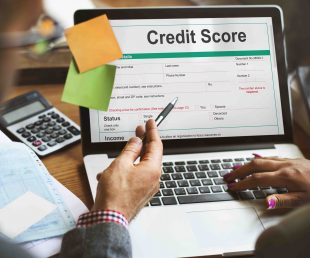Does the idea of taking 20 or more years to pay off $10,000 worth of credit card debt sound appealing? Does the thought of paying more than $15,500 in interest fees on that $10,000 debt seem like a wise financial move?
These are silly questions, or course—the answer is clearly no to both of them. Yet if you choose to make only the minimum monthly payments on your credit card accounts, this math is a very real example of the situation you could be facing—a lot of wasted money over a very long period of time.
If you’ve done your homework, you already know that revolving an outstanding credit card balance from one month to the next will not only hurt you financially but can also damage your credit scores. For this reason, it’s important to tackle your credit card debt problem sooner rather than later. Here are three ways to go about it:
1. Accelerated Payback
One method of tackling credit card debt involves scaling back on your charges and accelerating the payback of your outstanding balances. If you’re carrying balances on multiple accounts then you’ll also need to prioritize which balances to pay down first (while maintaining on-time minimum payments on every account, of course). Here are a few options to consider.
• Pay off the balance closest to being maxed out: This option may help your credit scores since scoring models like FICO and VantageScore pay attention to how much of your credit limits you utilize. As your debt-to-limit ratio falls, your credit scores will likely improve.
• Pay off the lowest balances first and move upward: This option, sometimes called the “debt snowball”, can help you build early momentum—and may help to improve your credit scores as well. Credit scoring models not only pay attention to your debt-to-limit ratios on each card, but also your total number of accounts with outstanding balances. The fewer accounts with balances, the better from a credit scoring perspective.
• Pay off the highest interest rates first: This is clearly a financial move. However, remember that anytime you pay down credit card balances, you’re likely helping your credit scores as well.
Remember, there are few “bad” ways to eliminate credit card debt. All of the options above can help to save you money and may potentially improve your credit scores.
2. Zero-Interest Balance Transfer Options
It is no secret that the interest rates on credit card debt are notoriously expensive. Even if you’ve begun to scale back your spending and are paying off your debt as aggressively as possible, high interest rates can slow your progress. For this reason many people will opt to use a zero-interest balance transfer as part of their credit card debt elimination plan.
If your credit is in decent shape, you may be able to qualify for a new credit card with an attractive balance transfer offer of 0% interest for some period of time, normally six to 18 months. In fact, some of your existing accounts may even have balance transfer offers as well. Without the burden of added interest, each payment will make a bigger dent in your debt. You may need to pay a balance transfer fee in the neighborhood of 3%, however, so make sure you can pay down the entire amount transferred within the interest-free introductory period to make it worthwhile.
Remember, though, if you’re fortunate enough to have access to a low- or 0%-interest balance transfer option, you need to stay committed to your newly formed good habits. Slip back into your former tendencies to overspend and you could find yourself in worse shape than when you started.
3. Personal Loan
Personal loans represent another potentially smart move when you are tackling a credit card debt problem.
Additionally, when you pay off high-risk revolving debt (credit cards) with low-risk installment debt (personal loan), your credit scores are likely to see a near immediate boost as an added bonus. Of course, for this or any other debt elimination strategy to work effectively, you’ll want to avoid charging up new balances on your freshly paid-off credit card accounts.
This article was written by John Ulzheimer from The Simple Dollar and was licensed from NewsCred, Inc. Santander Bank does not provide financial, tax or legal advice and the information contained in this article does not constitute tax, legal or financial advice. Santander Bank does not make any claims, promises or guarantees about the accuracy, completeness, or adequacy of the information contained in this article. Readers should consult their own attorneys or other tax advisors regarding any financial strategies mentioned in this article. These materials are for informational purposes only and do not necessarily reflect the views or endorsement of Santander Bank.
![]()



